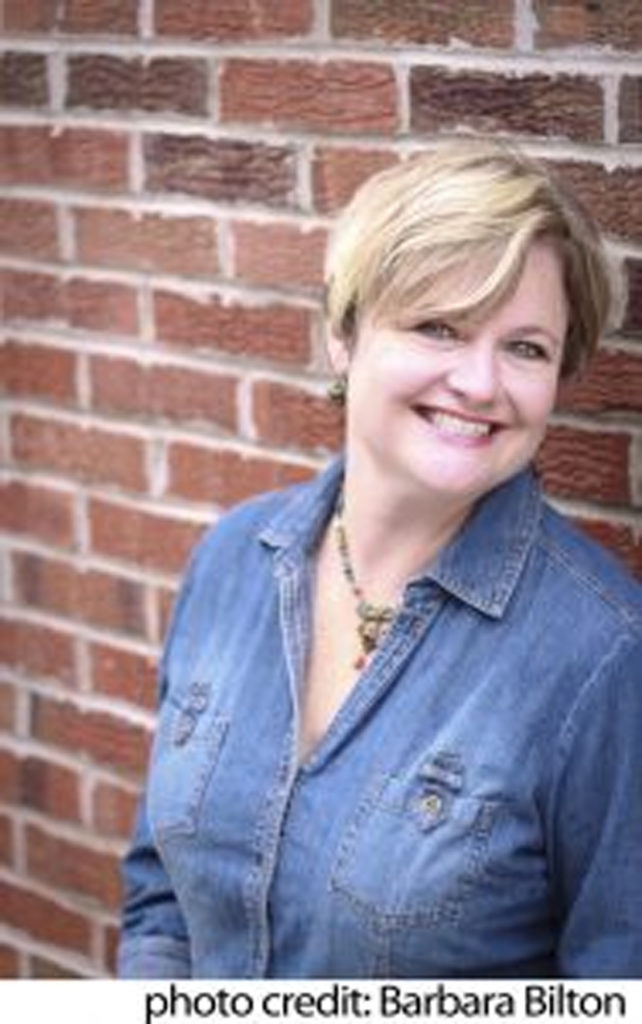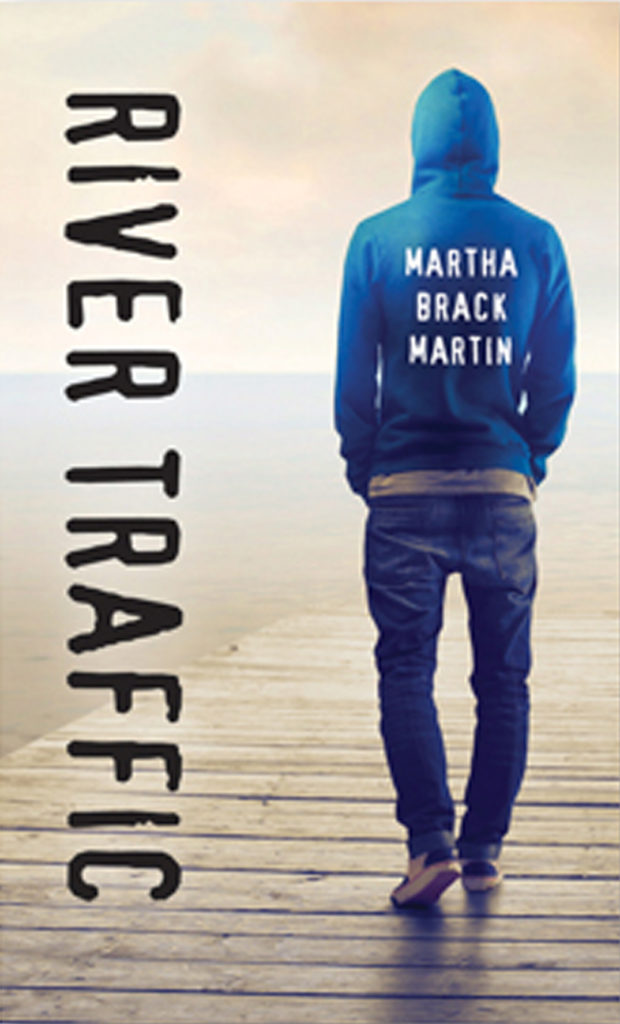
By Derrick Grose
For more than twenty-five years Martha Brack Martin has been a teacher and, for all but eight of those years, she has been a teacher-librarian. She is from the southern Ontario town of LaSalle, near Windsor, and that area is the setting for her young adult novel, River Traffic, published last year. In addition to having authored four non-fiction books for children as well as a number of teacher guides, Martha facilitates workshops on children’s literature, teaching with technology and librarianship. With this background, she is an ideal subject for an author interview in this debut issue of the Canadian School Library Journal.

What motivated you to make the move from classroom teacher to teacher-librarian?
From the time I started my teaching career at this little rural school in Essex County, I was helping purchase items for the collection with whomever was the TL at the time. As an English major and avid reader, I had a vested interest in seeing great books in that school. It wasn’t a big leap to grab the job once I had enough seniority to be a contender.
What is your best memory of a school library when you were in elementary or secondary school?
I loved “library” as a kid, and our very formal Australian teacher librarian introduced us to video novels, classics, and controversial books, which I found impressive (we’re talking the 70’s!) I moved to a new town for high school, and the high school library became my refuge until I got to know people. I still see that dual “personality” in my current school library — a multi-use learning commons where ideas are fostered, and a sacred refuge for those who need it.
What book did you like best as a child or young adult? What was its appeal?
Mrs. Haines, that Australian librarian of my youth, read us The Little Broomstick by Mary Stewart when I was in grade 4. It stayed with me for years — the magic, the mystery, and the spunkiness of the heroine who takes on a school for witches, just to save her cat. As soon as I got hired, I went looking for it and bought a used copy to share with my students!
What do you miss most about the school library as it was when you started out as a teacher-librarian?
I have to say…not much! In eighteen years, I’m pleased with the development of our school libraries into SLLCs, and I wouldn’t go back. That said, it IS demoralizing to note that I am still fighting many of the same battles that I started fighting back then, however. We still have administrators who don’t understand TLs need to work with all students in the school, who don’t understand the need for a budget to provide updated resources and new technologies, and who don’t understand the TL should be the embedded “instructional coach” in the school, collaborating with staff at all levels.
What is the most positive change you have noted in school libraries as they have evolved into today’s learning commons?
I think the most encouraging thing I’ve noticed is how so many teacher librarians have embraced change and let go of the idea that they need to be the “keepers of the knowledge.” We have fabulous teacher librarians who have thrown themselves into coding, the making movement, robotics, and new ways to tackle inquiry, learning along with (and sometimes from) their students. We have enthusiastic literature specialists who are expanding their knowledge into new ways to use that literature and indeed, new literacies altogether. Librarians have always been key players in the history of civilization – and as we embrace SLLCs, we still are!
What do you like most about being a teacher-librarian?
It sounds cliché, but I love seeing students get excited about what they are learning. I live for the kid who “hates reading” to come back and ask for the next book in the series he started during literature circles. I beam from ear to ear when one of my primary kids shows me her prezi or when one of my kindergarten kids proudly shows me how he navigated through PebbleGo to learn that parrotfish eat coral. I have the best job.
How and when did you become a writer?
I’ve always loved writing, and started my first novel (still unfinished) when I was 14. My high school yearbook “ambition” was to “become rich and famous writing trashy romance novels.” As a writer in Canada – and especially a children’s writer writing part time – I know now that rich and famous isn’t going to happen. I’ve decided to settle for “sharing good stories that might hook kids into reading more.” As a TL, that’s a goal I can live with. I joined Kidcrit, an online critique group run by award-winning author Marsha Skrypuch, back in 2003. There I learned how to improve my writing and made connections that allowed me to share it professionally.
How has your career as a teacher-librarian influenced your writing?
I write for the kids I teach. I think teacher librarians have the biggest advantage if they want to become writers for children, because we know our audience, and we know our competition. I know what I like to read, and what my kids like to read. I also know what they can’t find! As a TL I know a lot of different publishers and what they print. I want to write things my students need to read, and what they will enjoy reading. I go from there.
 Without giving too much away, your young adult hi-lo novel River Traffic (Orca, Oct. 2016) deals with smuggling along the Detroit River, from the days of the rumrunners to modern times. Though the book is essentially a mystery, you managed to weave a lot of family and peer relationship elements into the plot as well. How did you come up with the story?
Without giving too much away, your young adult hi-lo novel River Traffic (Orca, Oct. 2016) deals with smuggling along the Detroit River, from the days of the rumrunners to modern times. Though the book is essentially a mystery, you managed to weave a lot of family and peer relationship elements into the plot as well. How did you come up with the story?
I love writing young adult fiction, and was working on a full length novel set in my area with a rumrunner backstory when I learned I needed spine surgery. I had been losing feeling in my right hand, and it turned out a spinal fusion was required if I hoped to regain it. As I was recovering, I wanted to practice my typing, but I knew I couldn’t commit to working on the longer story. My friend Eric encouraged me to write a hi-lo for Orca’s Soundings series. As I recovered, I used my research from the longer story to flesh out an idea I’d had after reading some serendipitous newspaper articles about activities on the Detroit River. Being a fan of Orca and their various hi-lo, reluctant reader series, I was excited to see if I could write something that would fit Orca’s needs and appeal to some of my students who can never find anything they like. If you are writing for teens, family and peer relationships are just a given ingredient. I researched the Detroit River’s waterways, marina culture, and Boblo Island with some helpful friends, and everything just worked.
How do your students respond to reading a novel set in their own back yard?
The students have been really excited about the book, which is great. Being a hi-lo, you can’t do much with description and extraneous detail, and the plot has to be very linear. My TL heart was warmed when one student freaked out, wanting to know if the rumrunner stuff was “real,” and then asked if he could research it since he’d had no idea we had “cool stuff like this” in our local history. I should have given him a free book!
How does the experience of writing a young adult novel compare with writing a work of children’s non-fiction such as D-Day (Crabtree, 2012)?
I much prefer writing fiction to nonfiction, especially when the nonfiction is publisher-driven. I’m grateful I was hired to write for Crabtree, because I learned a lot and D-Day was my first foray into writing for a reluctant reader audience. That said, it’s a lot more fun to play with words and chase after your characters to see what they will do, rather than just recounting facts and events.
Do you have another writing project in the works? What can you tell us about it?
I find I can’t write fiction during the school year, because I haven’t learned yet how to disconnect from my day job. My brain is too full and to write I need to live in the world of my characters. I’m hoping to get back to my longer YA work in progress this summer. It’s a murder mystery with a historical backstory set in the days of the rumrunners. The main character is a sarcastic, super bright techie girl (she’d make a fabulous librarian!) She also happens to have a peculiar gift…and if she can’t figure out how to use it in time, it just might get her killed.
Thank you very much, Martha!
Photos by Barbara Bilton: www.barbarabilton.com/